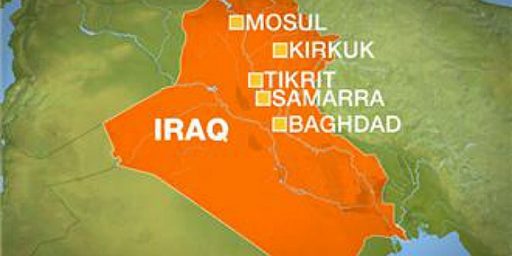US Wounded in Iraq Reaches 10,000
US wounded in Iraq reaches 10,000 (BBC)
The Pentagon says that more than 10,000 US military personnel have been wounded in Iraq since the conflict began in March 2003. Newly published figures show that more than 5,000 of the wounded have been unable to return to duty. Many have been left with serious injuries such as lost limbs and sight, mostly as a result of the blast effects of roadside bombs. More than 1,300 US troops have been killed.
The latest figures underline that an equally telling price is being paid in the number of US soldiers being wounded there, says the BBC’s Pentagon correspondent Nick Childs. Advances in military medicine and body armour mean that many have survived wounds that they would not have done in previous conflicts.
15,000-plus dead and wounded low compared to any major war the United States has fought, but certainly higher than most of us expected. Certainly, the figures would be substantially higher without the advances in tactical skill, body armor, and military medicine.
In a somewhat related story that I vaguely recollect having heard about before, the Philadelphia Inquirer reports the Army’s cracking down on a MASH surgeon’s weblog:
Military Doctor’s Iraq Web Diary Shut Down
A Bucks County military doctor serving in Iraq says he was forced to shut down his Internet war diary last week after Army officials decided his gripping accounts of frontline medicine constituted a breach of Army regulations. Maj. Michael Cohen, a doctor with the 67th Combat Support Hospital unit, had chronicled the bloody aftermath of the Dec. 21 mess-hall bombing in Mosul that killed 22. That account and 12 months of other postings on his Web log, www.67cshdocs.com, were replaced with a short notice: “Levels above me have ordered, yes ORDERED, me to shut down this Web site. They cite that the information contained in these pages violates several Army Regulations,” Cohen wrote, adding that he disagreed with the ban.
Military blogs have grown numerous since the invasion of Iraq, often providing a closer account of the war than traditional media. But such “milblogs” present a problem for military brass because the diaries are available to anyone with Internet access, including insurgents. Lt. Col. Steven Boylan, a spokesman for coalition forces in Iraq, said the Pentagon allows blogging so long as authors do not disrupt discipline in their units, make statements on behalf of commanders or the Army as a whole, or reveal operational details that could aid attackers. “Sometimes a blog might contain subtle nuances from which you can put together a complete picture of our operations, which insurgents can use to attack us,” Boylan said. He said he was not aware of any bloggers facing court martial or other serious discipline. He could not confirm the investigation into Cohen’s blog, saying it would likely be handled by field commanders in Mosul.
“We definitely don’t want to impinge upon somebody’s free speech. We’re out here defending that. But it can cross a line,” Boylan said.
I’d be interested in the details of this. One would think that a view of what’s happening in the ER would indeed give a good picture of the damage the insurgents are inflicting.





James, I’m sure you can answer the following question better than I: How does the loss ratio compare to other major US wars? IThe KIAs + wounded not returned to unit (plus other losses? illness etc?) seems like it comes in around 5% of our deployed strength. Is that high, low? I ask because I don’t think we’ve fought another major war with this small a deployment either, so I’m curious. (I’m guessing the ratio is still low, thanks to the advances in medical care, armor and standoff power.)
Jim,
According to a recent WaPo story, which I blogged here, the rates are remarkably low in this war:
Phillip Carter and Owen West think that’s a bit misleading, though. See this post.
Sorry, James, I wasn’t clear. The Post article is about fatality rates and the percentage of wounded who die. I’m more interested in loss rates (KIA, wounded not returned, Other) as a percentage of deployment.
Jim,
Gotcha. Don Sensing does some calculations and finds that “World War Two’s permanent reduction of the total force caused by death or wounds” was 4.65 percent whereas the total for the combined Iraq and Afghanistan operation is 0.37 percent or 0.45 percent, depending on how one treats the Reserves.
He’s got lots of links to official sources and whatnot.